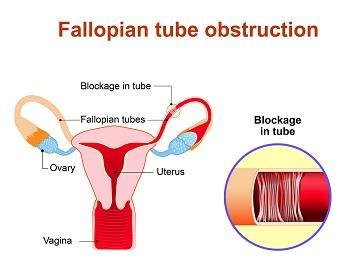Are you having difficulty getting pregnant? Does your OBGYN believe that a fallopian tube obstruction could be to blame? If so, then chances are good that you’ll have to undergo a diagnostic test known as selective salpingography to determine the health of the fallopian tubes and to determine if there are any blockages.
have to undergo a diagnostic test known as selective salpingography to determine the health of the fallopian tubes and to determine if there are any blockages.
Once a month an egg is released from the ovaries during ovulation. Once the egg is released it moves from the ovary through the fallopian tubes; however, if there is a blockage within the fallopian tubes the egg cannot get to the uterus. If there is only a partial blockage, it could lead to an ectopic pregnancy (a serious condition in which the egg is fertilized within the fallopian tubes).
Due to the seriousness of this condition, it’s important that we determine if a blocked fallopian tube is the root cause so that we can treat the problem right away. During a selective salpingography a small catheter is inserted and guided into the entrance of the fallopian tube with help from an X-ray. Once the catheter is at the opening of the tube, a special dye is injected into it.
If there is no blockage, the dye will successfully travel the length of the fallopian tube, but if there is a blockage the gel will be blocked (which your gynecologist will be able to detect on the X-ray machine). In some cases, the obstruction can be opened during this diagnostic procedure; however, it isn’t always possible. Your OBGYN will be able to determine if the obstruction is something that can be treated right now or if this will require a separate procedure.
In many instances, a blockage may be the result of a muscle spasm, which is not considered serious and can easily be treated. Of course, there are other reasons why you may be faced with an obstructed fallopian tube including uterine fibroids, pelvic inflammatory disease, chlamydia or endometriosis. Sometimes an obstruction can even occur as a complication of abdominal surgery.
A fallopian tube obstruction doesn’t produce any symptoms so the best way to tell whether this condition is affecting your ability to conceive is to visit your OBGYN for an evaluation right away.
